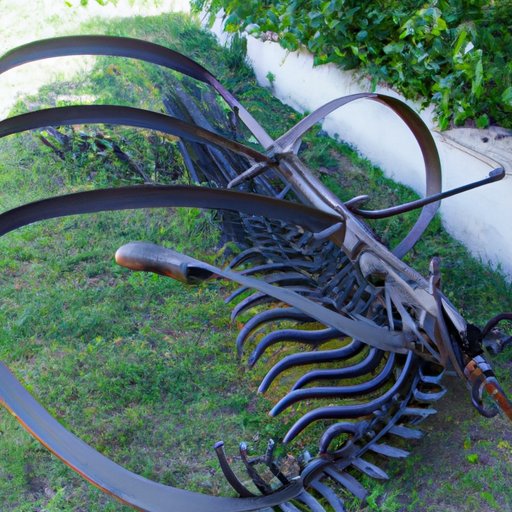Introduction
In the 1800s, a period of rapid technological advancement, two inventions revolutionized the way farmers worked: the reaping machine and the steel plow. These inventions allowed for increased efficiency, productivity, and accuracy in farming, ultimately leading to greater economic growth and development. This article will explore how these two inventions changed the face of agriculture in the 1800s, including their social and economic effects, the challenges faced by farmers adapting to new technologies, and profiles of the inventors responsible for them. Finally, we’ll look at how current farming practices have been shaped by the two inventions.
Comparison of Two Inventions
The reaping machine, invented by Cyrus McCormick in 1831, was the first successful mechanical harvester. It allowed farmers to cut and collect grain crops more quickly and accurately than ever before. The steel plow, invented by John Deere in 1837, greatly improved on traditional wooden plows by being able to turn over heavy soil with ease. Both inventions were revolutionary in their time and had far-reaching implications for the agricultural industry.
The reaping machine was an immediate success, as it allowed farmers to harvest up to five acres of wheat per day compared to the one acre they could do with scythes. In addition, the machine eliminated the need for multiple workers, reducing labor costs. The steel plow, meanwhile, was equally groundbreaking. It could turn over even the toughest soil, allowing farmers to expand their acreage and cultivate more land. The plow also made it easier to clear fields of weeds and stumps, resulting in higher crop yields.

Economic and Social Effects of the Two Inventions
The introduction of the reaping machine and the steel plow had a profound impact on agricultural practices. With the ability to harvest and cultivate more land in less time, farmers were able to increase their production, resulting in higher profits. This, in turn, led to the expansion of rural communities and the emergence of new industries.
The impact of the two inventions was also felt on a global scale. By increasing the output of grain, the reaping machine and steel plow helped reduce food prices and made it possible for countries to feed larger populations. This resulted in an overall improvement in living standards and helped fuel the Industrial Revolution.
Challenges Faced by Farmers
Although the two inventions had many benefits, there were also challenges associated with using them. For example, some farmers found it difficult to adjust to the new technology and struggled to understand how to use and maintain the machines. Additionally, the cost of purchasing and operating the machines was often too high for small-scale farmers, making them inaccessible to those who needed them most.
Another challenge was that the reaping machine and steel plow could only be used in certain types of terrain. Farmers in hilly or rocky areas found it difficult to use the machines and thus had to rely on manual labor to harvest and cultivate their crops.
Profiles of the Inventors
Cyrus McCormick and John Deere were two of the most influential inventors of the 19th century. McCormick was born in Virginia in 1809 and grew up on a farm. At the age of 22, he developed the first successful reaping machine, which he then patented in 1834. McCormick went on to become a successful entrepreneur, selling his invention all over the world.
John Deere, born in Vermont in 1804, was a blacksmith by trade. He developed the first steel plow in 1837 and subsequently founded the John Deere Company. Deere’s invention revolutionized the way farmers worked and helped pave the way for the modern agricultural industry.
Analysis of How Current Farming Practices Have Been Shaped by the Two Inventions
Today, the legacy of the reaping machine and steel plow is still evident in modern farming practices. Technology has advanced significantly since the 1800s, and many of the machines used today are based on the same principles as the original inventions. They allow for faster and more efficient harvesting, tilling, and planting, resulting in higher yields and lower costs.
In addition, the introduction of the two inventions enabled the development of new agricultural techniques, such as crop rotation and fertilization. These strategies have allowed farmers to maximize their yields and produce higher quality crops. Furthermore, the widespread adoption of the steel plow led to the development of specialized equipment designed to make farming easier and more efficient.
Conclusion
The reaping machine and steel plow changed the face of agriculture in the 1800s. By allowing for greater efficiency, productivity, and accuracy in farming, they had significant economic and social impacts on rural communities and the global economy. While there were challenges associated with transitioning to new technologies, the two inventions ultimately paved the way for modern farming practices. Today, the legacy of the reaping machine and steel plow can still be seen in the way farmers work, from the use of technology to the development of new techniques.
(Note: Is this article not meeting your expectations? Do you have knowledge or insights to share? Unlock new opportunities and expand your reach by joining our authors team. Click Registration to join us and share your expertise with our readers.)
